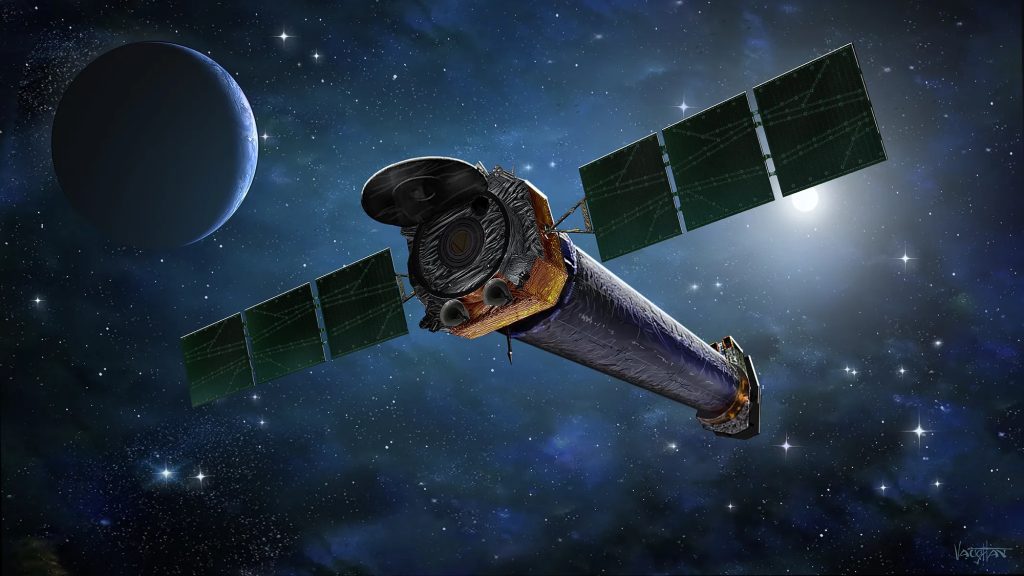THE WOODLANDS, Texas — NASA announced that its proposed budget for fiscal year 2025 is restricted by a debt-ceiling agreement that limits overall spending. This is causing setbacks, potential cancellations, and broader uncertainty for many NASA science programs.
NASA unveiled its fiscal year 2025 budget proposal on March 11, asking for $25.384 billion, which is the same amount it received in fiscal year 2023. This is slightly more than $500 million than what the agency received in the final fiscal year 2024 spending bill that was passed last week.
However, NASA had initially requested nearly $27.2 billion in its original fiscal year 2024 budget request a year ago. The request projected seeking $27.73 billion in 2025, so the new fiscal year 2025 proposal reflects a reduction of more than $2.3 billion from those earlier goals.
During a discussion with reporters about the budget proposal, NASA Administrator Bill Nelson attributed the budget limitations to the debt ceiling agreement put in place last year. This agreement imposed limits on non-defense discretionary spending, which includes NASA, for fiscal years 2024 and 2025.
He specifically pointed out “a small handful of people in the House of Representatives” who would only agree to raising the debt ceiling if there were spending caps. NASA ended up with a 2% reduction in 2024 compared to 2023. “In a small agency that is doing a lot,” he said, “it makes a big difference.”
This extends to the fiscal year 2025 request, where overall non-defense discretionary spending increases by only 1% over 2024 levels. “Naturally, we have to make hard choices,” he said.
Many of those tough choices affect NASA’s science programs. NASA asked for $7.566 billion for science in 2025, which is a $231 million increase from the final 2024 spending bill. However, NASA had expected to spend more than $8.4 billion on science programs in 2025 according to last year’s budget proposal.
One of the changes in the 2025 budget proposal is the cancellation of the Geospace Dynamics Constellation mission, which was a top priority in the previous heliophysics decadal survey. NASA had suggested postponing the mission’s development in its 2024 budget proposal, although the report accompanying the final 2024 spending bill instructs NASA to provide Congress with a budget and schedule for launching it by the end of the decade.
The budget proposal also suggests restructuring the Earth System Observatory line of missions and maintaining a partnership with the Japanese space agency JAXA on a mission they are leading, while “evaluating options” for carrying out other aspects of the aerosols and cloud, convection and precipitation designated observables from the Earth science decadal survey. A future Surface Biology and Geology mission will be divided into two projects “to maximize execution flexibility and reduce near-term budget requirements.”
NASA is also cutting spending on two of its current space telescopes, the Chandra X-Ray Observatory and Hubble Space Telescope, as agency officials revealed in the autumnNASA is suggesting a decrease of about 5% in Hubble’s budget, mainly by saving money from working together with the James Webb Space Telescope and giving out less research grants.
The cuts for Chandra are more significant, decreasing from $68.3 million in 2023 to a proposed $41.1 million in 2025. The agency's budget request mentions that the Chandra spacecraft has been deteriorating, and they need to actively manage several systems to keep temperatures within acceptable ranges. The proposal plans for yearly spending on Chandra to decrease to just $5 million by 2029 as a start to scale back its operations.
The budget for Mars Sample Return (MSR) is uncertain. The 2025 budget proposal allocates over $2.7 billion for planetary science in general, but lists only “TBD” for MSR as they await the results of a program architecture review due by the end of March.
In April, the spending for ’24 and ’25 will be reported. That’s why there is no figure for ’25 yet.
However, all the planetary science funding in the budget request is already designated for other programs. Nicola Fox, associate administrator for science, mentioned that tough choices will need to be made to maintain a balanced overall portfolio. She also expects the planetary science budget not to increase once funding is allocated for MSR.
Commercial space stations and Artemis
Among other changes, the budget proposes a decrease in funding for NASA’s Commercial Low Earth Orbit Destinations (CLD) program, which supports work on commercial space stations to replace the International Space Station. The program was given $228 million in fiscal year 2024 and was projected to receive $229.6 million in 2025, but the new budget request asks for $169.6 million instead.
Ken Bowersox, NASA associate administrator for space operations, said the decrease is due to the awards given in the ongoing first phase of the CLD program. He believed the funding was generous and close to the maximum under the current budget levels.
NASA is still working on developing a U.S. Deorbit Vehicle (USDV) for the ISS, but the fiscal year 2025 budget proposal does not specify a specific amount for it. Nelson mentioned that NASA is aiming to secure funding for the USDV through a standalone domestic supplement spending bill yet to be considered by Congress.
Funding for NASA’s exploration programs, including Artemis lunar exploration, remains nearly the same as the final 2024 bill, with a request for nearly $7.62 billion compared to $7.67 billion received in 2024.
One small change in the budget schedule is a six-month pushback in the Artemis 5 mission, from September 2029 to March 2030. This mission will be the first to use Blue Origin’s Blue Moon lunar lander, after SpaceX’s Starship lands on the Artemis 3 and 4 missions. Cathy Koerner, NASA associate administrator for exploration systems development, explained that the delay in Artemis 5 is related to “budget levels anticipated over the next five fiscal years.”
The Coalition for Deep Space Exploration, a group representing the industry, expressed worries about the irregular schedule of Artemis missions, stating that the agency's plans for frequent missions are now delayed until the early 2030s. The group stated that regular funding for launching missions will help develop and maintain the space industry workforce necessary to keep our leadership in space exploration.
Nelson mentioned that any expectations for increased budgets will have to wait until at least fiscal year 2026, when the spending caps from the debt ceiling agreement end. He said, "We're not going to get out of this hole until you finish both fiscal years, '24 and '25."
However, he noted that the current situation for the agency is not as severe as it was a decade ago, when budget sequestration resulted in deeper cuts. Nelson, who was a senator at the time, recalled, "Things were constrained considerably. So, I'd say this is mild by comparison to back then."
NASA Fiscal Year 2025 budget proposal (in millions of $)
| SCIENCE | $7,334.2 | $7,565.7 | $231.5 |
| Earth Science | $2,195.0 | $2,378.7 | $183.7 |
| Planetary Science | $2,716.7 | $2,731.5 | $14.8 |
| Astrophysics | $1,530.0 | $1,578.1 | $48.1 |
| Heliophysics | $805.0 | $786.7 | -$18.3 |
| Biological and Physical Sciences | $87.5 | $90.8 | $3.3 |
| AERONAUTICS | $935.0 | $965.8 | $30.8 |
| SPACE TECHNOLOGY | $1,100.0 | $1,181.8 | $81.8 |
| EXPLORATION | $7,666.2 | $7,618.2 | -$48.0 |
| Orion | $1,338.7 | $1,031.0 | -$307.7 |
| Space Launch System | $2,600.0 | $2,423.2 | -$176.8 |
| Exploration Ground Systems | – | $758.8 | – |
| Exploration Other | – | $3,405.2 | – |
| SPACE OPERATIONS | $4,220.0 | $4,389.7 | $169.7 |
| STEM ENGAGEMENT | $143.0 | $143.5 | $0.5 |
| SAFETY, SECURITY AND MISSION SERVICES | $3,129.0 | $3,044.4 | -$84.6 |
| CONSTRUCTION & ENVIRONMENTAL | $300.0 | $424.1 | $124.1 |
| INSPECTOR GENERAL | $47.6 | $50.5 | $2.9 |
| TOTAL | $24,875.0 | $25,383.7 | $508.7 |









